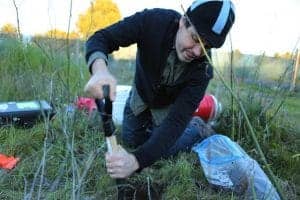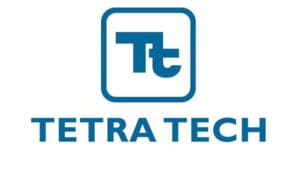For both armed and unarmed combat, the United States military is unparalleled in the world. So, when the U.S. Navy points the finger at Tetra Tech for its bungled Hunters Point cleanup to deflect from its own liability, it’s a carefully thought-out advance strategy that has worked for decades on contaminated Naval bases around the globe.
by Carol Harvey
Scandal on Treasure Island
San Francisco taxpayers are barely aware that Treasure Island suffered a major clean-up scandal involving the Navy and Tetra Tech, EC, Inc., seven years before recent media attention was focused on the “faked” cleanup at Hunters Point.
It took entities who were not the Navy to bring to light mishandled cleanups at both Treasure Island and Hunters Point. As early as 2001, Lisa Davis wrote the SF Weekly article, “Fallout,” that, with close public scrutiny, would have raised huge red flags about the Navy’s pattern of faulty Bay Area cleanups and the danger of constructing housing on their bases.
Ten years later, in 2011, a brief flurry of news reports revealed that the Navy, along with contractor Tetra Tech, had botched Treasure Island toxic cleanup in a fashion paralleling the 2017-2018 exposure of Hunters Point radiation cleanup data fraud that followed five to six years later.
Between 2012 and 2014, a huge upheaval wracked former Naval Station Treasure Island when two investigative reporters exposed radiation cleanup omissions by the Navy and its contractor. In 2012-2013, Matt Smith and Katharine Mieszkowski wrote several news pieces exposing the Navy-contractor underreporting of the numbers and kinds of lethal radioisotopes on Treasure Island.
Around the same time, news of Tetra Tech’s botched Hunters Point remediation, for which the contractor was reportedly paid $250 million, had just begun to emerge.
In 2014 and 2017, the Hunters Point revelations elicited intense press coverage that overshadowed the malfeasance on Treasure Island and attracted far wider attention.
At Hunters Point, first in 2014, the U.S. Nuclear Regulatory Commission launched an investigation into Tetra Tech EC, Inc., and company whistleblowers came forward claiming the cleanup data had been faked. Additionally, University of Santa Cruz researchers verified the Navy was using outdated remediation standards.
In 2017, even more Tetra Tech workers asserted that Hunters Point malfeasance seeped downward through the company from the management level, and students at Golden Gate University’s Environmental Law and Justice Clinic uncovered “alleged fraud by Tetra Tech.”

Navy ordered to repeat faulty radiation report
The 2012 Treasure Island scandal was focused on a February 2006 radiological survey entitled a Historical Radiological Assessment (HRA). The Navy published this document, which was prepared by Weston Solutions, Inc., an environmental engineering firm handling superfund site cleanup based in Vallejo, California.
Continuing to insist that radiation levels were safe, the Navy redid the work, amending the faulty 2006 remediation report, to which Tetra Tech had contributed, with a 2012 draft and a 2014 final Supplemental Technical Memorandum, Part One and Part Two.
Navy retained Tetra Tech at both Treasure Island and Hunters Point even after the contractor botched the cleanup
In 2011 and 2012, after corruption by the Navy and Tetra Tech at Hunters Point was first exposed, the company was allowed to continue remediation on the former naval base.
Instead of firing Tetra Tech from Treasure Island, the Navy elevated the contractor from the lesser role of contributor to a more responsible position. Tetra Tech replaced Weston Solutions, Inc., taking the lead in writing and publishing the aforementioned Supplemental Technical Memorandums detailing the resurveying, retesting and the new, improved remediation.
The San Francisco Bay View newspaper reports here for the first time that, after six additional years searching for more rad in Treasure Island soil, Navy project manager Chris Yantos announced in February 2016 that the Navy had unearthed 500 to 600 additional radiological objects both inside remediation zones and in the community. When added to the 575 reported earlier in 2011, the island total is driven above an estimated 1,000. The Navy did not respond to emails requesting cumulative totals of new hot objects or soils the Navy identified between 2016 and 2018.
In 2017, even after the Tetra Tech work on Hunters Point was exposed as faked, instead of discharging the company from Treasure Island for engaging in fraud, the Navy enabled Tetra Tech to shape-shift and merge with a second contractor, Battelle. Together they were hired to scan Yerba Buena Island and Clipper Cove for petroleum.
Their shared work ultimately located petroleum along the Clipper Cove shoreline. They claimed it would remain stable if undisturbed.
This maneuver will allow larger, more expensive yachts to “safely” harbor between the fake island and the real one, garnering huge profits for the Treasure Island Development Authority. Let’s hope the hulls of deeper, wider yachts will not scrape loose petroleum from the mud at the bottom of Clipper Cove.
Navy’s history of not ‘coming fully clean’
The Navy doesn’t seem to want the public to know the extent of contamination at these sites. From the beginning, the game plan of one of the military’s most powerful arms seems to have been to conceal from public awareness the amount of the contamination on both Treasure Island and Hunters Point.
That way, they can respond to pressure from powerful politicians and developers to fast-track an incomplete, inadequate or sloppy cleanup job so the land can be turned over to the City before taxpayers find out. Then, under the public relations guise of augmenting San Francisco’s precious housing stock in the current rental crisis, developers can jump in and construct hugely profitable high-end Treasure Island condos far beyond the financial reach of most San Franciscans.
Who is responsible?
Instead of accepting responsibility for remediation of the Navy’s toxic base, Derek Robinson, its environmental coordinator at Hunters Point, directed blame elsewhere, saying the Navy had “lost confidence” in Tetra Tech and its data.
Clouds of doubt gathered over Tetra Tech first in 2011, then 2014. Continuing to pay a dubious company hundreds of millions of dollars, then finger-pointing in its direction when the inevitable fraud was discovered seems – well – weak.
Engaging in this questionable act of blame-shifting, the Navy abrogated its first responsibility, which is to taxpayers. The Navy solicited specific amounts of public money from Congress earmarked to accomplish specific tasks. Navy project managers are responsible for organizing and carrying out identified jobs within a cleanup project. Their duty is to monitor contractors and subcontractors closely, making certain public dollars are appropriately spent.
Contractors take the hit
The process of fast-tracking projects ensures that mistakes and inaccurate data reporting will inevitably occur. When lead contractors are found shaving data to speed the work, the Navy pulls in an army of new contractors to clean up their mess.
The profits new contractors make to review, repeat and repair the botched Hunters Point cleanup will cost taxpayers millions more. Three “experts,” including Navy officials, some of whom declined to be identified, provided names of 30 companies and individuals involved in a “multi-agency investigation.” These entities (who will be listed in Part 5 of this series) will be paid considerable sums to accomplish the Hunters Point do-over. When asked, the Navy provided – on the record – several additional names not provided by other officials and “experts.”
In addition to this soaring outlay, the SF Examiner reported on Oct. 4, 2016, “Community Investment and Infrastructure commissioners … approved a $230,000 contract with ALH Urban & Regional Economics to review Lennar’s new financials once they are submitted.” The botched cleanup will drive upward the builder’s projected costs.
Sick residents – Treasure Island’s smoking gun
The Navy is generally believed to have left the highest level of contamination at Hunters Point. Treasure Island soil, however, was the Navy’s dumping ground for a wide range of radiation, chemicals and the heavy metals arsenic and lead. Treasure Island residents have for years been forced to live in townhouses abutting cleanup zones.
Adding insult to injury, asbestos insulation and mold clogs the walls of the aging Navy homes to which poor and people of color – in a colossal example of environmental classism, racism and human rights abuses – have been moved in the ongoing, but futile, effort to “solve” San Francisco’s homeless crisis.
The large number of Treasure Island residents – sailors who once lived on the former Naval base and San Franciscans unable to meet current soaring rents – who were and are sick is proof that something on Treasure Island is very, very wrong.
In summary: San Francisco taxpayers are the losers
The evidence is clear: The former Treasure Island Navy base is contaminated, and the exposure of these poisons to residents over the years, both Naval and civilian, has resulted in their developing cancers, tumors and many other diseases. Attention is deliberately diverted from these people, and nothing is done for them.
The San Francisco Bay View newspaper has reported in multiple articles that powerful federal, state and city politicians and developers will let nothing stand in the way of billions in profits from redevelopment on both former Navy bases. They seem willing to accomplish this goal at any cost, including the sacrifice of human health and lives.
However, by the time the extent of the toxicity is revealed, after earthquakes have further lowered the rapidly sinking island or ocean rise completely drowns it, the power-brokers will have pocketed the rent money and moved on.
The former Treasure Island Navy base is contaminated, and the exposure of these poisons to residents over the years, both Naval and civilian, has resulted in their developing cancers, tumors and many other diseases. Attention is deliberately diverted from these people, and nothing is done for them.
The Navy knows that the process of speeding these projects will generate inevitable mistakes and inaccurate data reporting. So it doesn’t mind if the inaccurate work continues. When the numbers go underreported or the data is corrupted, it is convenient for the Navy to point the finger away from itself and, for speedier transfer, use its contractors to suppress information exposing the high toxicity of these sites.
As a result of that malfeasance, the losers are the taxpayers who are funding the redevelopment on both bases. But first they will be blindsided by an enormous advance bill for a cleanup that turns out to have been botched. Those same taxpayers will be forced to fork out millions more when the Navy uses their money to re-hire an army of additional contractors to provide remediation specialists to analyze the mistakes and re-do the faulty work.
The contractors have no problem with this plan. The scapegoated party will absorb the blame for the others and “take one for the team.” They know that the Navy will keep the guilty party on as long as possible, or the targeted contractor will simply resurface in another form.
In the end, San Francisco taxpayers are hit with the mega-loss trifecta – paying once for the $5 million Treasure Island redevelopment and unknown millions for the Hunters Point mess; a double hit for botched, incomplete cleanups on two Naval bases; and, third, they may be left holding the financial bag for uninhabitable, toxic developments at both Hunters Point and Treasure Island during a housing crisis.
In the end, San Francisco taxpayers are hit with the mega-loss trifecta.
Unthinkable outcome: New Treasure Island condo owners and their children might suffer the fate of sick island tenants, past and present. Heavy metals, arsenic and lead may leach into the pipes embedded in unsuccessfully capped toxic soil (caps inevitably leak and break) and pour out of their taps.
A note about caps: As proved after the Hunters Point cleanup, caps eventually leak and crack.
Navy and TIDA officials deny caps will be created to cover island toxins.
However, acting environmental coordinator Dave Clark gave an example of the Navy leaving at least one existing building as a cap. In his presentation at a 2017 TIDA Board meeting, Clark stated that the land under the Child Development Center at Avenue E and 11th Street functions as a cap over dioxins and metals.
On Sunday, Oct. 15, 2017, a resident spoke with a worker who was spreading dirt over the former North Point cleanup zone area near her home. The man told her that the purpose of the dirt was to create a cap, and, “Basically they are raising the island by 2-1/2 feet of dirt over an 8-1/2 inch slab of concrete. Since they can’t really clean it,” he continued,” they can cover it.” The man said they figured this was going be the method they would use to protect new people moving to the island.
“At the December 2017 RAB meeting, I asked Clark whether the dirt they are spreading currently over the island is considered a cap to cover contamination. Clark said, “No, they are simply applying clean dirt.” Island Director Robert Beck seconded that motion.
Redevelopment residents may eventually suffer cancers and tumors from exposure to radioactive and chemically contaminated soil and water. If they escape these toxins by living on upper floors, dusty Treasure Island winds will continue to buffet their windows with asbestos fibers and toxic molds.
The land on Hunters Point to date has been found to be uninhabitable, and there’s a strong possibility that the same thing will happen at Treasure Island.
This article is preventative. Hopefully, here’s where the prevention starts.
Carol Harvey is a San Francisco political journalist specializing in human rights and civil rights. She can be reached at carolharvey1111@gmail.com.










